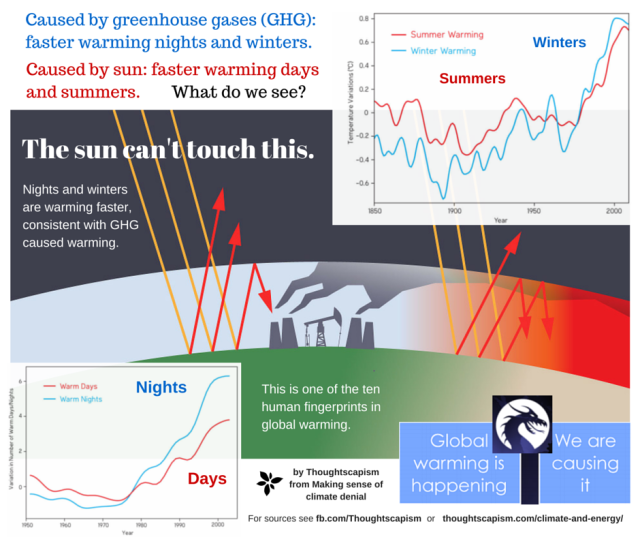In Part 1 of this article, I outlined some of the variables which can affect Earth’s climate, and gave a brief overview of plate tectonics, and how changes in continental positioning can lead to climate change through albedo feedback and via the alteration of ocean circulation and heat distribution patterns. In doing so, I used the example of the Rodinia Supercontinent and the Snowball Earth hypothesis of the Neoproterozoic era in order to relate the concepts to events in Earth’s prehistory. For the sake of completeness, I want to finish up that example by briefly going over a few proposed triggering mechanisms that could have made a runaway albedo feedback loop possible in the Cryogenian period. After that, I want to go over the ways in which the presence of mountain ranges can affect local and regional climate.
Although the exact causal sequence (and even the SnowBall Earth hypothesis itself) is still an unresolved area of active scientific debate, there are multiple candidates for such a cooling trigger mechanism: decreased solar luminosity, global cooling from a Super Volcano eruption, or perhaps a reduction in atmospheric methane – a much stronger greenhouse gas than CO2 – due to reactions with atmospheric oxygen could plausibly have contributed. There is also evidence suggesting increased sequestration of CO2 by rocks due to weathering effects from high precipitation levels. The idea behind the latter hypothesis is the following: Carbonate and Silicate rock weathering reactions are important carbon sinks in Earth’s carbon cycle:
Carbonate rock weathering reaction:
CaCO3 + CO2 + H2O → 2HCO3– + Ca2+
Silicate rock weathering reaction:
CaSiO3 + 2CO2 + H2O → 2HCO3– + Ca2+ + SiO2
Precipitation levels tend to be high around the equator, which therefore increases these weathering reactions, and thus increases CO2 sequestration, thereby decreasing the greenhouse effect, and leading to global cooling. Once sufficient equatorial land ice could accumulate, the aforementioned ice albedo feedback effect could ensue.
The end of the extreme Neoproterozoic glaciation is an interesting story in its own right, but in addition to the breakup of Rodinia via tectonic plate movement, it involves a greenhouse effect facilitated by a very long period of extreme volcanism, which I’ll be covering in a subsequent post. It also directly preceded the Cambrian explosion.
Rodinia was not the last time Earth had a tropical continental arrangement, but a critical change occurred: the evolution of forests. The Devonian Period (419 – 372 mya) featured the Greening of the Continents, and the evolution of forests, which serve as carbon sinks. So, by the time the Pangea Supercontinent formed (about 250 mya), an equatorial continental arrangement did not necessarily mean excessive rock weathering reactions, let alone runaway ice albedo feedback.
Plate tectonics can also influence climate through the formation of mountains (orogeny). Mountains can have profound effects on climate, particularly in their effect on precipitation patterns on the surrounding lands. Higher points on mountains tend to correspond to lower temperatures, so as rising moist warm air makes its way up the windward side of a mountain, it cools down, thus causing its ability to hold water to decline, which in turn leads to precipitation (rain or snow). Consequently, the leeward side of the mountain will often receive less precipitation, and by the time that air reaches the adjacent flat lands, it may not have any moisture left. This is one reason deserts are sometimes located directly next to mountain ranges. Mountains can also affect air circulation patterns great distances away. You can read more about how mountains affect climate and weather patterns at the Mountain Professor.
It’s perfectly natural to wonder what (if any) role changes in Continental positioning have played in the global warming and climate change we’ve been experiencing currently. The answer is very little (if any). The issue is the RATE at which the current change has been occurring. These processes I’ve described take place over tens or even hundreds of millions of years. The continents tend to move at roughly 2 cm a year, and even faster moving plates rarely exceed 10 cm even on a fast year. The continents haven’t moved all that much in the last few hundred thousand years, and less than meter or so within the last 150 years during which the recent changes have been occurring. So continental movement is ruled out as a principle causal determinant of the current warming. It simply doesn’t induce climatic changes fast enough to explain the rapidity with which the recent warming has been occurring. However, its effects on the planet over the long term can be quite profound indeed.
References:
Brady, P. V. (1991). The effect of silicate weathering on global temperature and atmospheric CO2. Journal of Geophysical Research: Solid Earth,96(B11), 18101-18106.
Davies, N. S., Gibling, M. R., & Rygel, M. C. (2011). Alluvial facies evolution during the Palaeozoic greening of the continents: case studies, conceptual models and modern analogues. Sedimentology, 58(1), 220-258.
Eyles, N., & Januszczak, N. (2004). ‘Zipper-rift’: a tectonic model for Neoproterozoic glaciations during the breakup of Rodinia after 750 Ma. Earth-Science Reviews, 65(1), 1-73.
Goodale, C. L., Apps, M. J., Birdsey, R. A., Field, C. B., Heath, L. S., Houghton, R. A., … & Nabuurs, G. J. (2002). Forest carbon sinks in the Northern Hemisphere. Ecological Applications, 12(3), 891-899.
Harris, B. (2008). The potential impact of super-volcanic eruptions on the Earth’s atmosphere. Weather, 63(8), 221.
Kerr, R. A. (1999). Early life thrived despite earthly travails. Science,284(5423), 2111-2113.
Lackner, K. S. (2002). Carbonate chemistry for sequestering fossil carbon. Annual review of energy and the environment, 27(1), 193-232.
Murphy, J. B., Nance, R. D., & Cawood, P. A. (2009). Contrasting modes of supercontinent formation and the conundrum of Pangea. Gondwana Research, 15(3), 408-420.
Schrag, D. P., Berner, R. A., Hoffman, P. F., & Halverson, G. P. (2002). On the initiation of 814 a snowball Earth. Geochemistry Geophysics Geosystems, 3.
Torsvik, T. H. (2003). The Rodinia jigsaw puzzle. Science, 300(5624), 1379-1381.




6 Comments
How Continental Drift affects Climate: Part I – Plate Tectonics, Albedo, and the SnowBall Earth Hypothesis – The Credible Hulk · October 5, 2016 at 11:07 am
[…] part 2, I’ll finish up the Rodinia Supercontinent and Snowball Earth example by discussing candidates […]
Milankovitch Cycles and Climate: Part I – Axial Tilt and Precession – The Credible Hulk · October 10, 2016 at 7:25 pm
[…] However, that axial tilt slowly varies between about 22.1 degrees and 24.5 degrees over long quasi-periodic cycles of roughly 41,000 years. The last maximum is estimated to have occurred around 8,700 BCE, and the next minimum should occur roughly around the year 11,800 CE. A more exaggerated tilt corresponds to more severe seasons: warmer summers and colder winters. As you may have guessed, less exaggerated tilt corresponds to milder seasons: cooler summers and warmer winters. The latter phases can lead to increased glaciation. This is because cooler summers mean less ice loss per year, and warmer winters mean more precipitation (rain or snow) to build up ice sheets. Now, you might be wondering why exaggerated tilt wouldn’t build ice sheets with its extra cold winters, but remember that the freezing point of water at 1 ATM of pressure is still going to be 0 degrees Celsius. Reaching negative 50 degrees C in the winter isn’t likely to facilitate much greater glaciation than reaching negative 10 degrees C, and those extra cold winters would involve less precipitation. To add insult to injury, the extra hot summers would melt greater portions of the existing ice each year. That’s why smaller axial tilt values are thought to correspond to increased glaciation and larger tilt values to deglaciation. Moreover, greater surface areas of ice cover can function to resist warming via the ice-albedo feedback (or snow-albedo feedback), which I mentioned briefly in my article on how continental drift affects climate (here and here). […]
The Structure and Properties of the Sun – The Credible Hulk · January 11, 2017 at 11:37 pm
[…] How Continental Drift affects Climate: Part II – Possible Snowball Earth Triggering Mechanisms + R… […]
The Solar Dynamo: The Physical Basis of the Solar Cycle and the Sun’s Magnetic Field – The Credible Hulk · January 13, 2017 at 12:05 am
[…] How Continental Drift affects Climate: Part II – Possible Snowball Earth Triggering Mechanisms + R… […]
Mean Field Theory and Solar Dynamo Modeling – The Credible Hulk · January 16, 2017 at 12:39 pm
[…] How Continental Drift affects Climate: Part II – Possible Snowball Earth Triggering Mechanisms + R… […]
No, Solar Variations Can’t Account for the Current Global Warming Trend. Here’s Why: – The Credible Hulk · January 17, 2017 at 12:49 pm
[…] How Continental Drift affects Climate: Part II – Possible Snowball Earth Triggering Mechanisms + R… […]
Comments are closed.